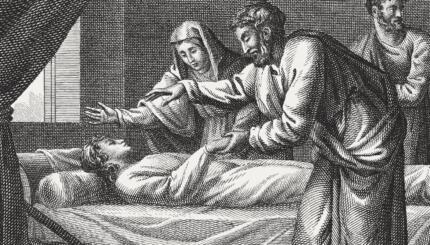According to Jewish Law it’s the practice to refrain from getting married between Passover and Shavuot – until Lag B’Omer (Shulchan Aruch 493:1). It is recorded that this custom serves as a memorial for the students of Rabbi Akiva, Tanna of the middle of the 2nd century, who perished during this period of time. Their deaths came to an end (or at least a break) on Lag B’Omer. But, why did the students of Rabbi Akiva die? And why would we mourn their death by refraining from getting married?
We can start to answer these questions by looking at the Gemara in Yevamot. There we learn:
Rabbi Akiva had 12,000 pairs of disciples from Gabbata to Antipatris; and all of them died at the same time because they did not treat each other with respect. The world remained desolate until Rabbi Akiva came to our Masters in the South and taught the Torah to them. These were Rabbi Meir, Rabbi Yehuda, Rabbi Yose, Rabbi Shimon and Rabbi Elazar ben Shammua; and it was they who revived the Torah at that time. A Tanna taught: “All of them died between Passover and Shavuot.” (Yevamot 62b)
It seems strange that Rabbi Akiva’s students died because they did “not treat each other with respect.” Rabbi Akiva taught that “Love your neighbor as yourself” (Leviticus 19:18) is the great underlying principle in the entire Torah (Torat Kehonim 4:12 and Talmud Yerushalmi, Nedarim 9:4). It would be surprising that even just one student of this great Tanna did not learn such a basic lesson. So what is the additional significance of the quantity of students who died?
It might be helpful to learn some more about who Rabbi Akiva was as a teacher. Despite his humble beginnings as a shepherd, Rabbi Akiva became a tremendous scholar. And while he had a tremendous effect on Jewish life, he was not without flaws. We learn in the Gemara that during the 24 years in which he accumulated these 24,000 students he did not see his wife once (Ketubot 62b-63a). There is no doubt that Rabbi Akiva loved his wife Rachel dearly. He gave his wife credit for all of the Torah they learned during his time away from her. When his students first met his wife he told them explicitly that they were all indebted to her. But here is the issue: while living apart from his wife for all of those years, Rabbi Akiva did not show his students the daily habits of respect. How were his students to learn how to treat each other with respect if Rabbi Akiva did not model this for them?
On Lag B’Omer we should take a moment and try to learn the lesson that evaded Rabbi Akiva’s students. How should we treat each other with respect? It is clearly not enough to just talk about it. If we want to teach respect, we need to model it.
It is in light of this that we see the real power of Jewish camp as an educational institution. As the adage goes, “Tell me and I forget, show me and I remember, involve me and I understand.” In school we are told a lot of things, but in camp the staff members model the most important lessons. And on the highest level we are all asked to get involved in creating the community.
Gemara
Pronounced: guh-MAHR-uh, Origin: Aramaic, a compendium of rabbinic writings and discussions from the first few centuries of the Common Era. The Talmud comprises Gemara and the Mishnah, a code of law on which the Gemara elaborates.
Shavuot
Pronounced: shah-voo-OTE (oo as in boot), also shah-VOO-us, Origin: Hebrew, the holiday celebrating the giving of the Torah at Mount Sinai, falls in the Hebrew month Sivan, which usually coincides with May or June.
Talmud
Pronounced: TALL-mud, Origin: Hebrew, the set of teachings and commentaries on the Torah that form the basis for Jewish law. Comprised of the Mishnah and the Gemara, it contains the opinions of thousands of rabbis from different periods in Jewish history.
Torah
Pronunced: TORE-uh, Origin: Hebrew, the Five Books of Moses.



